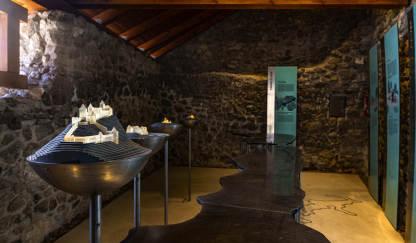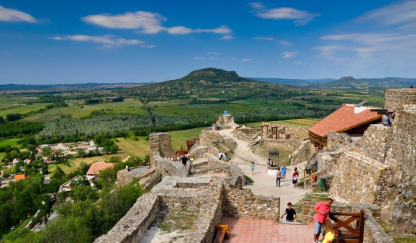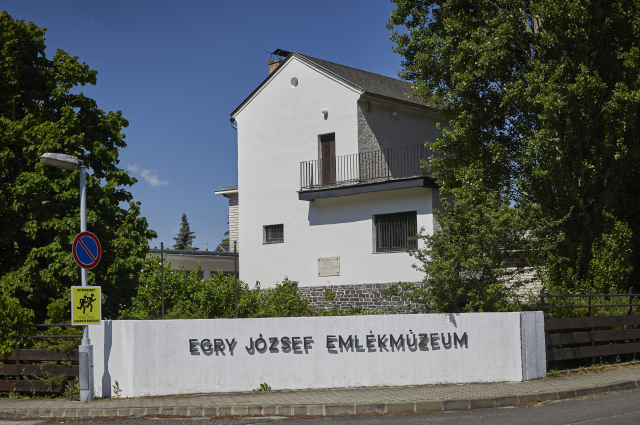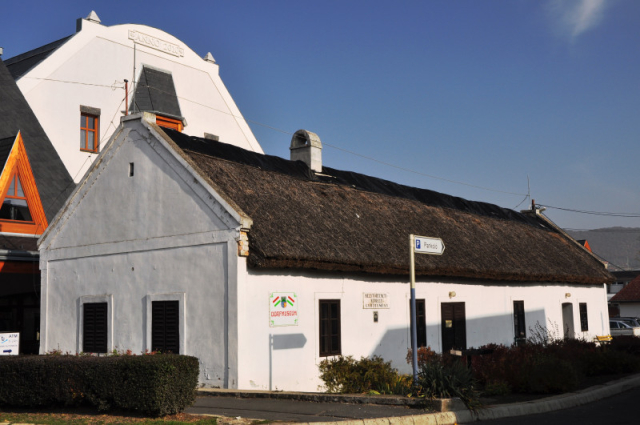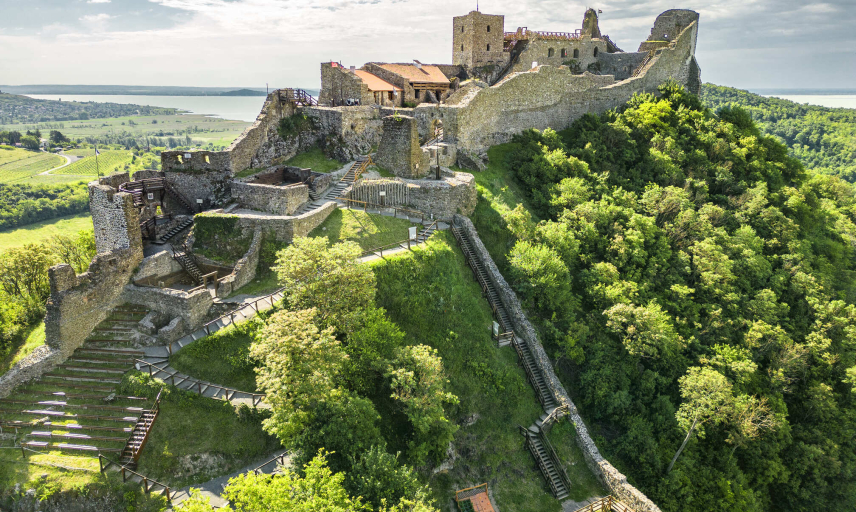
8261 Badacsonytomaj-Badacsony, Park u. 20. •
+36 87 531 013 •
badacsonytomaj@tourinform.hu
Castle of Szigliget
In the south-western part of the Tapolca basin, on top of a 230-metre-high hill stands the remains of the north-south oriented, irregularly shaped castle of Szigliget.
Szigliget - 750 years of the "Castle of Lake Balaton"
The Szigliget Castle celebrated its 755th anniversary in 2015 and is currently run by the Municipality of Szigliget. As a result of continuous reconstruction work, it has become the only castle on the shores of Lake Balaton that can be visited, and is therefore rightly called the Castle of Lake Balaton. The number of visitors has been increasing rapidly every year, thanks to the year-round opening hours. Take part in our summer festivals at Easter, Pentecost and St. Stephen's Day or just drop in on a period warfare demonstration by the castle's soldiers. The panoramic view of the castle is a unique sight, perfectly complemented by the reconstructed walls, squares, baroque kitchen, forge or castle chapel. And at the foot of the castle, next to the artisan's courtyard, there is an exhibition of weapons and a castle gallery.
History
After the Tatar invasion, Béla IV gave one of the islands of Lake Balaton (Szigliget) to the Abbey of Pannonhalma to build a stone castle. Abbot Favus built the castle in two years (1260-62), which pleased the king so much that in 1262 he exchanged the Debréte of Nitra for the Alma and Bak estates in Somogy and Zala respectively. From then on, as royal castle, he entrusted it to the Mórichidai family of the Pok clan. In 1300, a new settlement began to develop under the castle, on the site of the present village, which was called Újfalu (New Village) or Szigliget in the early 15th century. The Móriczhidai family held Szigliget for about a hundred years afterwards, and it is thought that the castle was extended in a major way at this time.
The Castle was acquired by the Lengyel family of Tóti in 1525. After the Battle of Mohács (1526), Ferdinánd I confiscated the possessions of the Lengyel family. Ferdinánd had joined János Szapolyai, and donated them to Bálint Török of Enying. However, the castle was not handed over to Bálint Török's family member. After the siege, the student Imre Bálint Török was appointed captain of the castle and immediately set about repairing it and adapting the medieval castle to the requirements of the age. Martonfalvay was the first to rebuild the outer castle and to dig the aforementioned well. In 1953, a circular cone-shaped water reservoir was excavated in the inner castle, the bottom of which Martonfalvay sealed with lead plates to prevent water from escaping. During these construction works, the layout of the castle, which was immortalised in drawings by Giulio Turco in 1569, was created. The castle reverted to the Lengyel family around 1547, with Brigitta Lengyel's husband, Bálint Magyar, as captain. In 1571, Bálint Magyar was already ill in Szigliget Castle, but he repulsed the Turkish attacks.
The castle was guarded by 12 hussars, 25 infantry and 1 artilleryman. After Boldizsár, the castle captain was Gáspár, who had ships built at his own expense to defend the castle against the Turks. At the end of the conquest, the castle of Szigliget, which was still owned by the Lengyel family, lost its military importance. No one paid attention to its repairs and it slowly fell into ruin. At the end of the 17th century, a lightning strike burnt down most of the castle, and King Lipót I ordered the demolition of the remaining buildings.
During the War of Independence of Ferenc Rákóczi II (1703-1711), the castle was no longer used by the kuruc armies and gradually fell into ruins, its stones being scattered by the population for building purposes. The remaining walls were reinforced in 1931, 1953 and 1965-66. Work on restoring the castle to its present form began in 1991 and is still ongoing.
Entrance fees:
- Adult: 2,000HUF
- Children (6-18 years old): 1,000 HUF
- Groups do not need to register in advance!
- At cash desk you can pay by cash or credit card.
Opening hours:
- January - February: 10:00 - 16:00
- March: 09:00 - 17:00
- April: 09:00 - 18:00
- May: 09:00 - 19:00
- June - August: 09:00 - 20:00
- September: 09:00 - 18:00
- October: 09:00 - 17:00
- November -December: 10:00 - 16:00
- 8264 Szigliget, Kisfaludy utca
- +36 70 371 5346 (csak nyáron)
- szigligetinfo@gmail.com
- https://www.szigligeti-var.hu/
- Closed
| Category: | Castle , Museum, exhibition |
Similar results
József Egry Memorial Museum
8261 Badacsony, Egry sétány 21.József Egry was a famous painter from the early 20th century who lived and painted most of his works in Badacsony. His main...
Read moreAurél Bernáth Gallery
8256 Ábrahámhegy Badacsonyi u. 13.Every year, the Aurél Bernáth Gallery in the House of Culture hosts a series of beautiful and high-quality exhibitions for art...
Read moreEcotourism Visitor Centre
8262 Badacsonylábdihegy, Herczeg Ferenc StrandLearn about the wildlife, geology and cultural history of the Badacsony area in two exhibition halls with interactive elements!...
Read moreLocal History and Ethnography Collection
8258 Badacsonytomaj, Fő u. 14.The Local History and Ethnographic Collection is located in the centre of Badacsonytomaj. Its material was collected by Miklós...
Read more